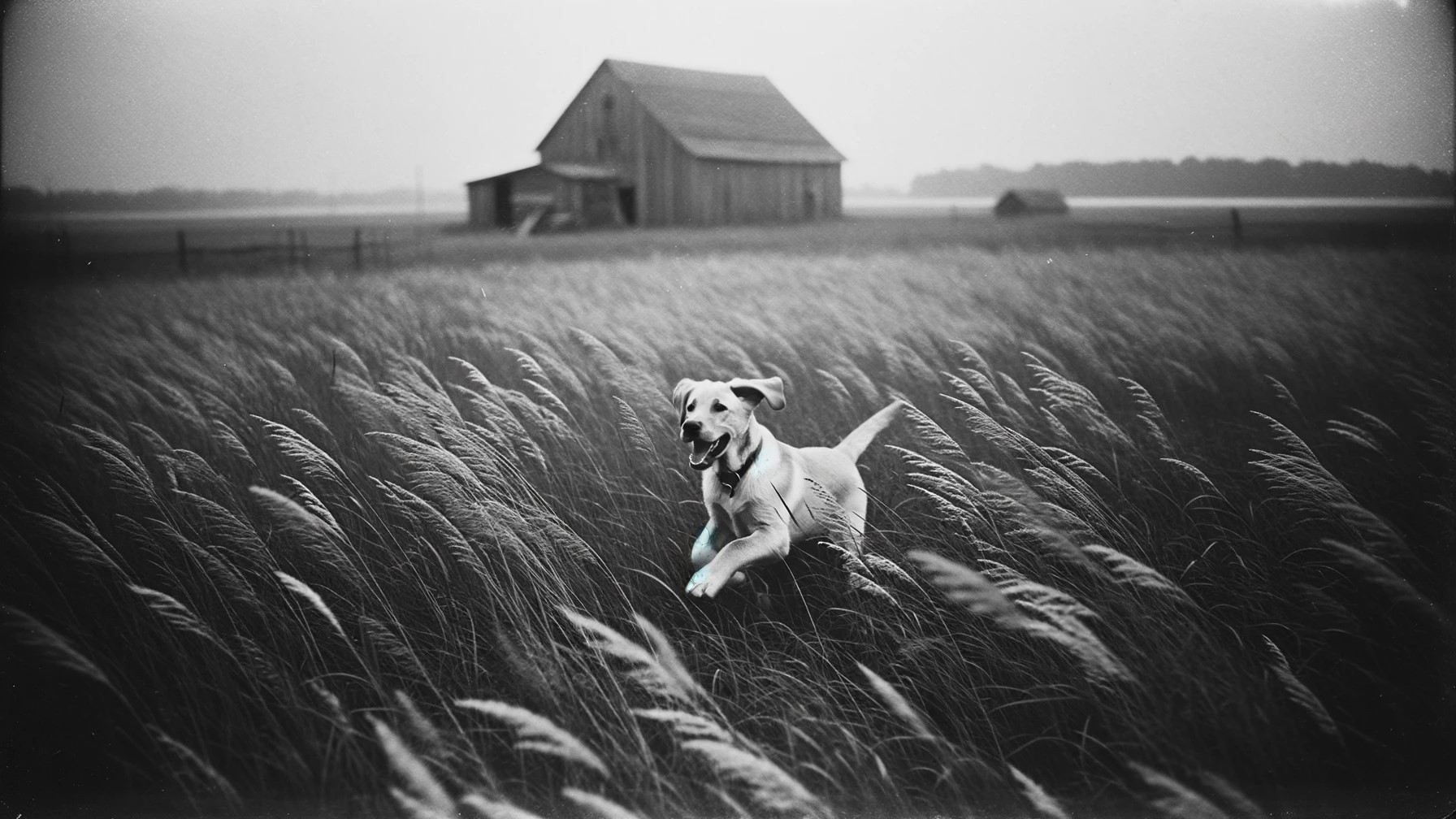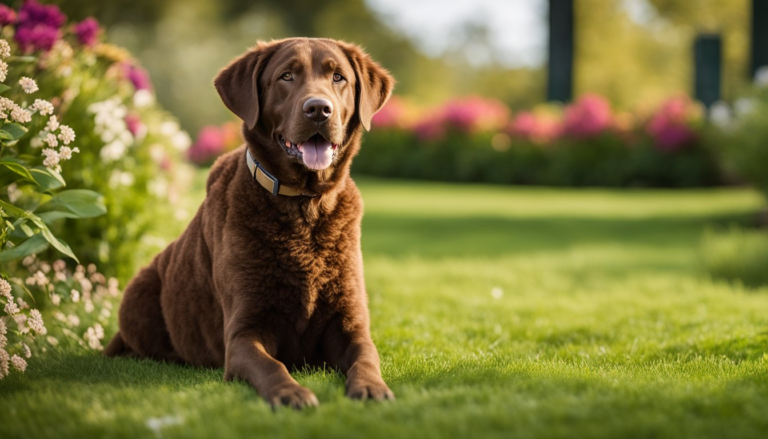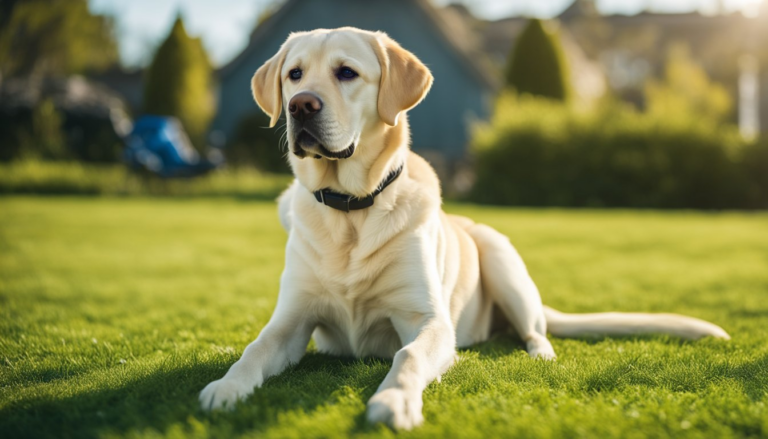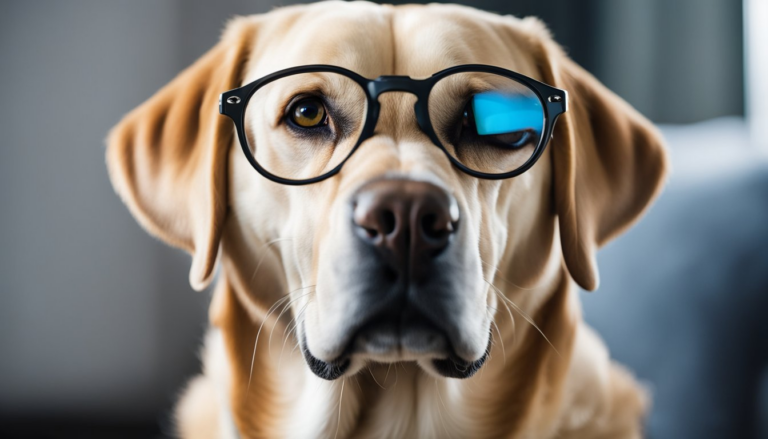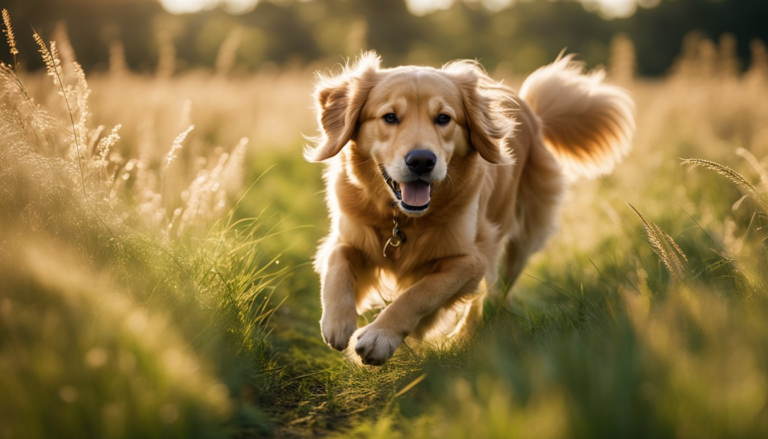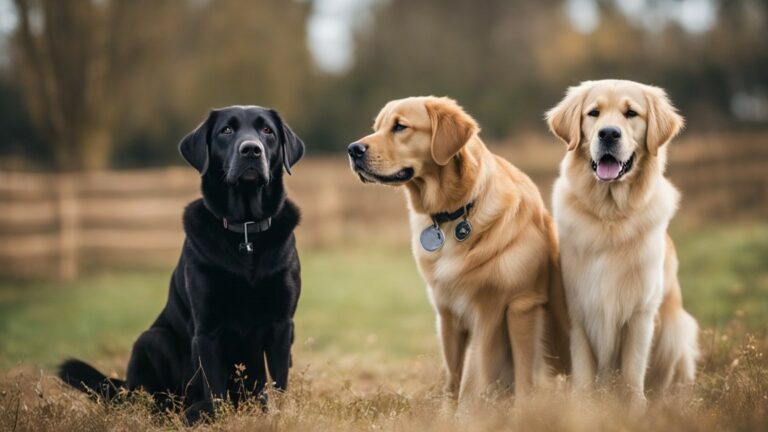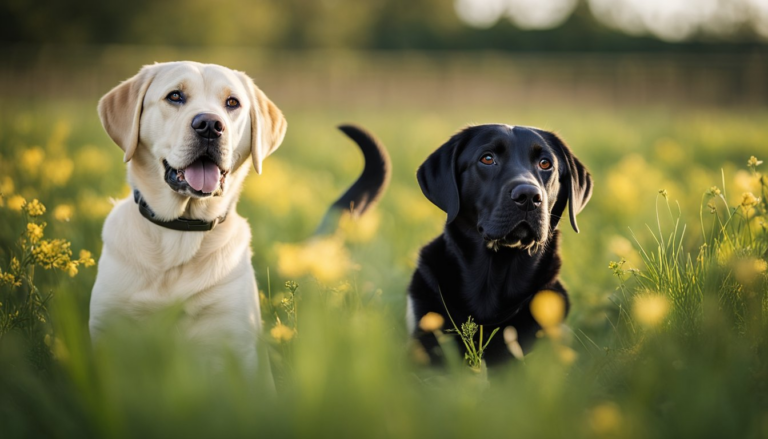Labrador Retriever History: Unraveling the Breed’s Past
The Labrador Retriever, often simply referred to as the “Lab,” is a highly popular breed known for its intelligence, friendliness, and versatility. These dogs were originally bred for the purpose of retrieving game, specifically waterfowl, in the early 19th century. Their origins can be traced back to Newfoundland, Canada, where they were initially bred to be “water dogs” that assisted fishermen with tasks such as retrieving nets from the cold waters.
As interest in the breed grew, the Labrador Retriever eventually made its way to the United Kingdom, where it continued to develop as a versatile working dog and much-loved family pet. While maintaining their strong retrieving instincts and love for water, the breed has also become well-known for its roles in supporting people with disabilities, search and rescue operations, and being reliable therapy dogs.
Quick Summary
- Originally bred as “water dogs” to assist fishermen, the Labrador Retriever’s origins can be traced back to Newfoundland, Canada.
- The breed eventually migrated to the United Kingdom, where it continued to develop as a versatile working dog and popular family pet.
- Today, Labrador Retrievers are well-known for their roles in supporting people with disabilities, search and rescue operations, and as therapy dogs.
Origins
The Roots in Newfoundland
The Labrador Retriever has its roots in the Canadian province of Newfoundland, where it was primarily bred for hunting and retrieving game. The breed’s ancestors were the now-extinct St. John’s Water Dog, also known as the St. John’s Dog and other local water dogs.
These dogs were invaluable to the early settlers, who relied on their retrieving ability to help them in fishing and hunting endeavors. Over time, they further developed the breed to possess strength, agility, and a strong sense of smell, culminating in the well-known characteristics of the Labrador Retriever we know today.
Introduction to the St. John’s Dog and Its Characteristics
The St. John’s Dog was an essential part of Newfoundland’s history, serving as a working companion to settlers for fishing, hunting, and other tasks. Its physical characteristics included a muscular build, a wavy or curly dense coat, and a sturdy tail. The dog’s webbed feet suggested its adaptation to the aquatic environment, which made it an excellent swimmer and retriever.
As the breed evolved, the St. John’s Dog’s characteristics combined with the features of other local water dogs, ultimately giving rise to the modern Labrador Retriever. Some of the most notable characteristics of the Labrador today include its friendly and easy-going temperament, high intelligence, and strong working ability, which are a testament to the hardy and versatile nature of its St. John’s Dog ancestors.
Historical Purpose
Fishing
Labrador Retrievers have a strong connection to water and fishing activities. Their origins can be traced back to working alongside fishermen, where they played an important role in assisting them with tasks such as retrieving nets and catching escaped fish.
Labrador Retrievers are known for their excellent swimming abilities and love for water, which made them the perfect companions for fishermen in need of skilled and reliable water dogs.
Their skills in retrieving nets were particularly useful, as they could recover fishing equipment more efficiently and effectively than humans. Catching escaped fish was another talent these dogs possessed, as their agile bodies and strong jaws allowed them to quickly snap up fish that slipped past the fishermen’s nets and lines.
Hunting
In addition to their fishing abilities, Labrador Retrievers have also been historically revered for their skills in hunting, specifically in retrieving game. Hunters quickly noticed the effectiveness of Labradors in this area and began to integrate them into their hunting practices, especially for duck and waterfowl hunting.
These retrievers would use their excellent sense of smell and their strong, agile bodies to locate and retrieve downed games with ease.
One of the most remarkable traits of Labrador Retrievers in hunting is their soft mouth, which allows them to carefully pick up and carry a game without damaging it. This skill made them highly sought after by hunters who needed a dog able to retrieve the game without leaving teeth marks or causing further harm.
To sum up, the historical purpose of Labrador Retrievers was deeply ingrained in both fishing and hunting activities. Their strong swimming abilities, skills in retrieving nets and games, and their soft mouth made them ideal companions for fishermen and hunters alike.
Migration to the UK
The Journey from Newfoundland to the UK
Labrador Retrievers, originally from Newfoundland, began their migration to the UK in the early 19th century. The breed’s exceptional swimming and retrieving abilities made them valuable assets to fishermen in their home region of Newfoundland. British visitors, impressed by the dogs’ capabilities, started bringing them back to England.
The Labrador breed continued to evolve in their new homeland, adapting to differing roles and environments. The breed’s name can be traced back to the Labrador region, which is geographically close to Newfoundland. The Earl of Malmesbury, an influential figure in the Labrador Retriever’s history, was the first to give the breed its name “Labrador” in the UK.
The Influence of the British Aristocracy on the Breed’s Development
The British aristocracy played a pivotal role in the Labrador Retrievers’ development and popularization. Key figures such as the 10th Earl of Home and the 5th and 6th Dukes of Buccleuch significantly contributed to the breed’s refinement. Their efforts were focused on breeding dogs with exceptional retrieving and hunting skills.
The Dukes of Buccleuch, especially the 5th Duke, were known for their partnership with the Earl of Malmesbury. They worked together to establish breeding programs that set the foundation for the modern Labrador Retriever. Their efforts yielded results, as the breed quickly gained popularity among English hunters and dog enthusiasts.
It was in 1903 that the UK Kennel Club officially recognized the Labrador Retriever as a breed. Since then, the Labrador Retriever has continued to grow in popularity within the UK and around the world.
English Labs, as they are often called, now represent one of the most beloved dog breeds, known for their distinct characteristics and loyal, friendly temperament.
Breed Development
Distinction Between Types
Labrador Retrievers, affectionately known as Labs, have developed into two main types over time – the American and British Labradors. American Labs tend to be leaner and taller than their British counterparts, which are stockier and more muscular.
Though both types share similar temperaments, the differences between the American and British Labradors can be attributed to their breeding for specific purposes – American Labs for hunting and field activities, and British Labs as show dogs and family pets.
| Feature | American Labradors | British Labradors |
| Build | Leaner, taller | Stockier, more muscular |
| Purpose | Hunting, field activities | Show dogs, family pets |
Standardization
The UK’s Kennel Club played a significant role in the standardization of the Labrador Retriever breed. They officially recognized the breed in 1903, and over time, breeders adhered to the Club’s guidelines, resulting in a more uniform appearance among Labs.
In the United States, the American Kennel Club (AKC) followed suit when they recognized the breed in 1917. The AKC further influenced the breed’s development, promoting adherence to specific guidelines and standards.
Physical Characteristics
Evolution of the Labrador’s Appearance
The physical appearance of Labrador Retrievers has evolved over time. Initially, Labs originated from St. John’s water dog, a now-extinct breed. Early Labs were smaller in size, but as breeders focused on specific qualities like strength and retrieving abilities, Labs gradually grew larger, changing their appearance accordingly.
Changes in Coat, Size, and Color
Labrador Retrievers are known for their short, dense coats, which act as a waterproof barrier to protect them during water retrievals. Over the years, breeders have prioritized coat quality, leading to the development of distinct coat variations among Labs.
Labs are famous for their three primary coat colors: black, yellow, and chocolate. Initially, black Labs were the most common. In the twentieth century, yellow and chocolate Labs emerged and gained popularity among breed enthusiasts. Yellow Labs can vary from pale cream to fox red, while chocolate Labs range from light to dark brown shades.
One distinguishing physical characteristic of Labs is their “otter tail,” which is thick at the base and tapers toward the end. This tail helps them maintain balance and stability while swimming. Markings on Labs are generally minimal, but some may have white spots on their chest or paws, which are considered mismarks by breed standards.
Rise in Popularity
Global Recognition
The Labrador Retriever has become one of the most popular dog breeds worldwide, thanks in part to its friendly and sociable temperament. In the United States, the Labrador Retriever has consistently ranked as the most popular dog breed for more than two decades, according to the American Kennel Club.
This breed’s rise in popularity began in the mid-20th century when they started to be more widely recognized as excellent family dogs, hunting companions, and service animals. As demand for the breed increased, Labs were exported to other countries, which helped to establish their global reputation.
Versatile Roles
Labrador Retrievers are known for their adaptability and willingness to learn, making them suitable for various roles. Their intelligence and cooperative nature make them excellent working dogs, particularly in retrieving games for hunters. In addition, their strong sense of smell has made them valuable assets in search and rescue operations, as well as in drug and explosives detection.
Adding to their versatility, Labs have made remarkable contributions as service animals, providing assistance to individuals with disabilities, including guiding the visually impaired, and providing emotional support and therapy for those in need. Their friendly and social disposition has also made them popular family pets, with a particular penchant for being great with children.
Health and Genetics
Common Health Concerns
Labrador Retrievers are generally known to be healthy and robust dogs, but like all breeds, they can be prone to certain health issues. One of the most common concerns is obesity, which can be influenced by appetite.
A study found that a deletion in the canine POMC gene is associated with weight and appetite in obesity-prone Labrador Retrievers. This genetic predisposition can make Labs more susceptible to gaining weight. Due to their love for food and tendency to overeat, it is important for owners to monitor their Labrador’s diet and exercise habits to maintain a healthy weight.
Another health concern for Labs is related to their joints. Labrador Retrievers can be prone to developing hip and elbow dysplasia, a genetic disorder affecting the hip and elbow joints. Research on Labrador and Greyhound pedigree has been conducted to better understand the inheritance pattern and conformation related to their joint health. Regular checkups and preventative care can greatly reduce the occurrence or severity of joint problems later in life.
Responsible Breeding
A key to maintaining the overall health of Labrador Retrievers is responsible breeding practices. This involves selecting mating partners with an emphasis on minimizing the risk of inherited illnesses and ensuring a diverse gene pool. Genetic testing and subpopulation differentiation are essential tools for reducing the chances of passing on genetic disorders to future generations.
In addition to selecting healthy breeding partners, conscientious breeders must also ensure the general well-being of their Labrador Retrievers. This includes providing routine veterinary care, vaccinations, and proper socialization to prevent temperament issues or anxiety-related health problems.
By prioritizing the health and genetics of Labrador Retrievers, breeders, and owners can contribute to the longevity and overall well-being of this popular breed.
The Modern-Day Labrador
Current Roles
Labrador Retrievers are undeniably versatile and have adapted well to various roles in modern society. They are renowned as exceptional family pets, known for their gentle nature, intelligence, and unwavering loyalty. This breed’s affable temperament, combined with their ease of training, makes them an ideal choice for households with children.
Besides being loving companions, Labradors excel in service roles such as guide dogs for the visually impaired and therapy dogs. Their keen sense of smell is also employed in search and rescue missions, as well as in detecting contraband substances.
In addition, the Labrador’s natural athleticism and love for running and fetching have made them a popular breed in dog sports such as agility, flyball, and dock diving.
Labradors in Popular Culture
Labradors gained considerable popularity in recent years, making them a household name. Their adorable appearance and endearing demeanor have made them the subject of numerous films, television shows, and books. Notable fictional Labradors include Marley from the bestselling book and movie “Marley & Me” and Buddy from the “Air Bud” film series.
In the world of sports, the Labrador serves as the mascot for several teams, displaying the breed’s versatility and athletic prowess. These beloved canines have etched their impact on modern-day culture, further cementing their reputation as an iconic breed.
Challenges and Controversies
Historical and Current Challenges Faced by the Breed or Breeders
Labrador Retrievers have encountered a number of challenges throughout their history, and breeders continue to face issues even today. From their initial origin as working dogs, Labrador Retrievers have evolved into a popular family pet, service dog, and sporting breed. This popularity has brought forth some complications for the breed and those involved in its development.
One of the major concerns in the breed’s history is maintaining their quality and health. With increasing demand for these dogs came a rise in indiscriminate breeding, resulting in a higher propensity for genetic disorders or health issues. Some common health problems for Labrador Retrievers include hip dysplasia, elbow dysplasia, and a tendency to become overweight due to their voracious appetite.
Additionally, the research surrounding behavior problems in pet dogs in Denmark has shown that compared to other breeds, Labrador Retrievers tend to have a lower risk of behaviors considered problematic.
However, this does not mean that Labrador Retrievers are entirely exempt from behavioral issues. According to a study on trends in behavior diagnoses in dogs, Labrador Retrievers and Golden Retrievers were evaluated less often for behavioral problems than dogs of other breeds. Nevertheless, breeders and owners must still be vigilant in addressing any problematic behaviors to ensure the well-being, safety, and overall quality of life of these dogs.
Another challenge faced by breeders is balancing the Labrador Retriever’s roles in both working and companion settings, all while preserving its breed characteristics. This can be achieved through responsible breeding practices, such as screening for health conditions and considering the temperament of the breeding dogs. By adhering to such practices, breeders can contribute to the development of healthy and well-adjusted Labradors for years to come.
Notable Figures in Labrador History
Key Individuals and Their Contributions to the Breed’s History and Development
The history of Labrador Retrievers is enriched by the remarkable individuals who significantly contributed to the breed’s development and popularization. One standout figure is the Earl of Malmesbury, who played a pivotal role in the early history of the breed.
The Earl of Malmesbury was a renowned British peer and sportsman who recognized the unique qualities of the Labrador Retriever and dedicated efforts to breed and promote these dogs for hunting and retrieving game. His kennels housed some of the earliest known Labradors, and he is often credited with coining the term “Labrador Retriever” to describe the breed.
Another important figure in Labrador Retriever history is the Duke of Buccleuch, he shared the Earl of Malmesbury’s passion for the breed and collaborated with the former in developing the modern Labrador we know today.
Together, they imported skilled hunting dogs from Newfoundland and selectively bred them to meet the requirements of the sporting community in Britain. Their work resulted in the establishment of a distinctive breed line known for its aptitude in retrieving game both on land and in water.
Throughout the years, the Labrador Retriever breed caught the attention of many dog enthusiasts and hunters who continued to refine and popularize it. Labrador Retrievers soon became one of the most sought-after breeds, known for their intelligence, trainability, and reliability. This versatile breed, initially bred for hunting purposes, has now gained immense popularity as a family pet, show dog, and working dog.
The history of the Labrador Retriever breed has seen noteworthy contributions from key figures such as the Earl of Malmesbury and the Duke of Buccleuch. Their passion for the breed and dedication to its development laid the foundation for creating the versatile, intelligent, and beloved Labrador retriever we know today.
Resources and Organizations
Introduction to Breed Clubs, Rescue Organizations, and Other Labrador-Focused Groups
Labrador Retrievers are one of the most popular dog breeds, and there are many organizations that are dedicated to preserving their history, promoting responsible breeding practices, and rescuing dogs in need.
These organizations can provide valuable resources for Labrador owners, breeders, and enthusiasts alike. This section will briefly introduce some of these organizations, including breed clubs, rescue organizations, and other Labrador-focused groups.
Breed Clubs: Various kennel clubs around the world recognize the Labrador Retriever as a breed. In the United States, the American Kennel Club (AKC) is a primary resource for breed standards, dog shows, and other Labrador-related events. Similarly, in the United Kingdom, the UK Kennel Club provides resources and support for Labrador owners and breeders.
These kennel clubs, along with regional and local breed clubs, work to promote responsible breeding practices, share important breed-specific information, and organize events to showcase the versatility and skill of Labrador Retrievers. Membership in these clubs is often a great way to connect with fellow Labrador enthusiasts and stay updated on breed-specific news.
Rescue Organizations: As with any popular breed, there are rescue organizations dedicated to helping Labradors in need. These groups work to save dogs from shelters, abandonment, or other dire situations and find them loving forever homes. Many rescue organizations, like Labrador Retriever Rescue, are run by volunteers who are passionate about the breed and committed to their welfare.
Rescue organizations often provide resources for potential adopters, including information on the breed’s characteristics and care needs, and support for those interested in fostering or adopting a Labrador. Volunteering with or donating to these organizations can help ensure that more Labradors find safe, loving homes.
Other Labrador-Focused Groups: In addition to breed clubs and rescue organizations, there are various groups and online communities centered around Labrador Retrievers. These groups may focus on specific aspects of the breed, such as training, fieldwork, showing, or pet therapy. Joining these groups can provide access to specialized knowledge, resources, and networking opportunities for Labrador owners and enthusiasts.
Frequently Asked Questions
What was the original purpose of the Labrador Retriever?
Labrador Retrievers were initially bred for the purpose of retrieving game, especially in water, during hunting excursions. Their short, dense double coat, as well as their strong and physically athletic build, made them the perfect canine for this job. They were highly valued for their ability to recover game from both land and water, assisting hunters effortlessly.
What did Labrador Retrievers evolve from?
Labrador Retrievers are believed to have originated from Newfoundland, Canada, where they were bred with St. John’s Water Dogs. These predecessors, now extinct, were smaller and had shorter coats but shared qualities like excellent swimming abilities and a strong retrieving instinct, which were passed on to the modern-day Labradors.
Why did Labradors almost go extinct?
In the 19th century, heavy taxation and strict breed restrictions in England and Canada almost led to the extinction of Labradors. Many breeders stopped breeding them due to the high cost and strict regulations. Thankfully, dedicated enthusiasts in the United Kingdom managed to save the breed by maintaining quality breeding programs, promoting its unique traits, and establishing the Labrador Retriever as a distinct breed.
What is the difference between English and American Labradors?
English Labradors, also known as show-bred or bench-bred Labradors, typically have a stockier build, thicker necks, and broader heads compared to American Labradors, which are also called field-bred or working Labradors. American Labs are generally leaner, taller, and more agile, making them better suited for fieldwork and hunting activities. The two types differ mainly in physical appearance and energy levels, but both have the characteristic Labrador temperament and intelligence.
How has the Labrador Retriever’s temperament changed over time?
Although the Labrador Retriever’s original purpose was as a working and hunting dog, it has evolved into a well-loved family pet over the years. Labradors have maintained their high energy levels and people-oriented nature, but have become more adaptable to different home environments and living conditions.
They still have a strong instinct to retrieve and therefore have a tendency to carry things in their mouths, but overall, these intelligent dogs are known for their gentle and friendly demeanor.
What factors contributed to the Labrador Retriever’s popularity?
The Labrador Retriever’s rise in popularity can be attributed to their versatile nature, ease of training, friendly temperament, and suitability for a wide range of tasks. Apart from being excellent hunting companions, they are widely used as guide dogs, search and rescue dogs, therapy dogs, and in various competitive canine sports.
Their sociable and lovable nature makes them highly regarded family pets as well, and their intelligence and eagerness to please contribute to their widespread appeal.

